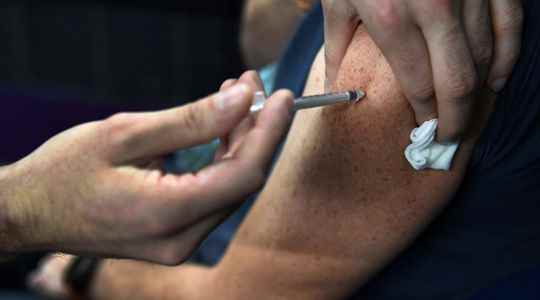What vaccination strategy will be put in place in the event of an epidemic resumption in the fall? The High Authority for Health, which regularly gives its recommendations on the vaccination policy against Covid-19, unveiled its new proposals on Wednesday to deal with a possible rise in coronavirus cases after the summer, with a new strategy which should not concern the entire population but target the most vulnerable people.
“Even if the current data seem to show that the epidemic is stabilizing in France, it is highly likely that the circulation of the virus will periodically re-intensify”, writes the HAS in a press release. For more than a month and a half, the number of positive cases has been decreasing steadily in France, as have admissions to critical care services. But scientists fear the virus could make a comeback in the fall, especially under pressure from more transmissible variants. “This is why, in order to limit the impact of a future wave, in particular on the most vulnerable, it is essential to build a vaccine strategy now, ready to be deployed in the months to come”, warns the HAS.
“Periodic transmission peaks”
Based on three scenarios described by the World Health Organization on the evolution of the virus, HAS has developed as many vaccine strategies. In the most optimistic of horizons, “the future variants that appear are significantly less severe, and immunity against severe forms is maintained”, consequently the vaccine strategy would only target immunocompromised people (in whom vaccination works poorly, or not at all due to a weakened immune system).
In the second scenario, the virus continues to evolve, and immunity declines over time, but the vaccine continues to protect against serious forms and death for a majority of the population. Transmission spikes may occur periodically. This is the scenario retained as the most probable by the HAS. “Periodic transmission peaks could occur due to the increase in the proportion of people with waning immunity, making it necessary to periodically administer a booster dose of vaccine for those most at risk of severe disease. “, she writes. It therefore recommends a booster vaccination for the populations most at risk: people aged 65 and over and/or those with comorbidities at risk of a serious form. In addition, the HAS also recommends considering the vaccination of health professionals “in particular with regard to future vaccine efficacy data against asymptomatic forms of the disease (question of efficacy against disease transmission)”.
Recall still insufficient in older people
Last March, this body already recommended a fourth dose of vaccine for people over 65 who were most at risk. This time it’s a second booster dose, for all those over 65 that she recommends, starting in the fall. This recommendation marks a change in philosophy on the vaccination strategy: unless the emergence of new, more virulent variants leads to a drop in immunity against severe forms, vaccination in the general population is no longer recommended, including in fall, and authorities are focusing on at-risk populations.
For the moment, the HAS does not specify what type of vaccine could be used to revaccinate in these populations. “As soon as new vaccines (in particular bivalent vaccines and new vaccine platforms) obtain their marketing authorization (AMM), the HAS will evaluate them, specify their place in this vaccine strategy”, she says.
Finally, the High Authority for Health also insists on the need to continue the vaccination campaign for the most vulnerable. It targets in particular the oldest people for whom complete vaccination coverage, which includes two doses and a booster dose, is still insufficient. As of May 11, only 76% of over 80s had received a primary vaccination and a first booster.
